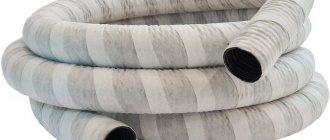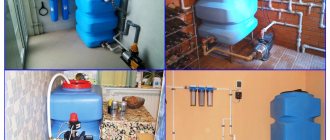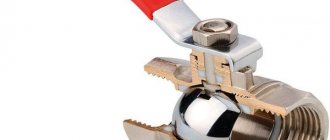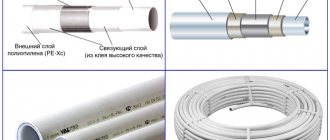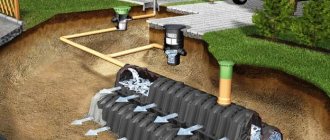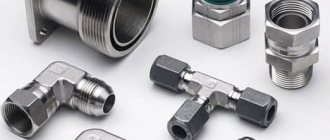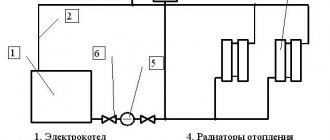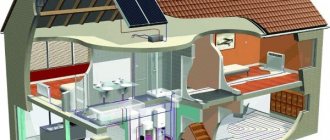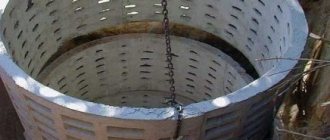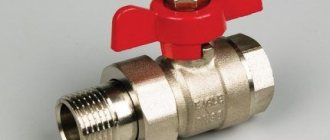In some regions, groundwater is very close to the surface. So close that they threaten the integrity of buildings (their foundations) and prevent plantings from growing. All these problems are solved by site drainage. In general, this event is costly both in terms of the amount of funds required and the time required. A considerable part of the time is spent on planning. If you do everything wisely, then you need hydrogeological research data and a project drawn up by a specialist. But, as usual, only a few do this; the majority make the drainage system with their own hands.
Site drainage can be designed as an element of landscape design
What is drainage and why does it need to be installed around a private home or commercial building?
A drainage system is a system of pipes, trays and various drainage materials, the main task of which is to quickly remove surface or groundwater from industrial buildings, private houses, various underground structures, plots and fields.
A classic drainage system looks like this:
- Drainage trench - into which drainage pipes are installed and various elements of the system are filled;
- Geotextile fabric – laid out to protect drainage from silting;
- Crushed gravel fraction 20/40 – Placed under the drainage pipe;
- Perforated drainage pipe in geofabric – laid at a slope;
- Crushed gravel fraction 20/40 – Fills the drainage pipe;
- Coarse washed sand - This is a drainage material whose task is to accept water and pass it through a sieve into a drainage pipe for discharge.
Cross section of a horizontal drainage drain
Why is drainage needed around a house or building?
- Drainage of water from the foundation and walls - The foundations of any building are not designed to constantly be in water. With constant exposure to moisture, they simply collapse. Destruction occurs for two reasons: ♦ Exposure to the aggressive environment of groundwater - groundwater contains various impurities and minerals that, with constant contact, can lead to the destruction of concrete and, accordingly, the foundation of the building. ♦ Seasonal temperature changes - Water is absorbed into concrete, brick, FBS blocks and other substances from which the foundation and walls of the house are made, then in winter this liquid freezes and thaws in spring, thereby destroying the concrete or other base of the foundation, forming microcracks in it (which then they can develop into large cracks), pores and voids.
- Do not let water wash away the foundation of a small building or house - Strong groundwater can over time wash away the base of the foundation (especially if all necessary standards were not followed during its construction), as a result of which deformation may occur and cracks may form in the walls of the house or on the foundation itself, be it a slab or strip foundation.
- Relieving water pressure on installed waterproofing – When building a house, it is necessary to waterproof the foundation, foundation slab and waterproof the underground parts of the building. One of the tasks of the drainage system made around the building is to relieve the constant pressure of ground and surface water on the waterproofing, which will ultimately help increase its reliable operation by 3-4 times.
Important: Drainage around the house is an auxiliary system and cannot replace waterproofing. Installing drainage will help the waterproofing last longer, since it will not be constantly in water.
Why is site drainage needed?
- Protection of plantings – Abundant water on a site often leads to the death of trees and other plants growing on it. Its drainage helps to drain the area to such a level that it is comfortable for various plantings to grow on it.
- Eliminating the effect of a swampy area - Abundant groundwater or high water, with certain types of soil, stagnates in the upper layers, as a result of which the soil becomes very wet and swampy, which makes it uncomfortable to operate and walk on it. A drainage system installed on and around the site will help drain water and dry the soil to a comfortable condition.
- Limit the access of clean and dirty water from neighboring areas - There are often situations when neighbors drain process water from a septic tank and other structures behind their area and it flows along a slope onto your territory. By installing a local drainage system, you can prevent water from entering your area.
Drainage after cholecystectomy for acute cholecystitis
A large prospective randomized study in 1991 and a meta-analysis of 1920 patients (ACA) summarized 10 similar studies. It was shown that when comparing patients with and without drainage in terms of mortality, reoperation or drainage due to bile accumulation, there were no differences. Wound infection more often accompanied patients with drainage (5). Thus, on the eve of the end of the era of BCI, routine drainage - the sacred cow of biliary surgery - was abandoned in many centers.
What is the trend in emergency LCE? In a recent study of Australian surgeons, drainage was left routinely in 1/3 of cases (6). Another small randomized trial comparing patients with and without drainage for LCE examined the effect of drainage on postoperative pain and nausea, in terms of gas removal, and found no difference (7). If routine drainage is pointless in ACE, why is it indicated in LCE? Therefore, Petrowsky et al. (3) drainage is not recommended for both ACE and LCE. In a prospective study of 100 patients who underwent LCE for acute cholecystitis, all of them underwent cholescintigraphy one day after surgery. Bile leakage was detected in 8, but all of them were asymptomatic (8). Most postoperative collections, be it bile, serous fluid or blood, remain asymptomatic, the fluid is absorbed by the peritoneum and this is well known from ultrasound studies since the time of AChE.
Drainage is much more effective at removing bile than stool or pus. Therefore, it is logical to leave a drain if the surgeon is concerned about possible bile leakage. For example, if a subtotal cholecystectomy is necessary, or when there are difficulties with sealing the cystic duct, or there is a suspicion of additional bile ducts in the area of the gallbladder bed, which manifests itself in the form of bile leakage from the surface of the bed.
Thus, although most patients do not require drainage, if the surgeon is concerned about possible bile leakage or excessive serous fluid, drainage is appropriate. In most cases, almost nothing is separated through such drainage. It is extremely rare that preventive drainage becomes therapeutic in the case of profuse and persistent bile leakage. In cases where the need for an existing drain is questionable, it is extremely important to remove it as soon as possible. “Dry” drainage for 24 hours indicates that it has served its role. Finally, Howard Kelly (1858-1943) said: “Drainage is the recognition of defective surgery.” Clinicians must be careful not to confirm this statement in practice: if it is safer to switch to an open procedure and carefully close the ultrashort cystic duct than to rely on questionable clip closure and safety drainage, then the choice is clear.
Types of drainage by depth
Drains can be divided among themselves according to the depth of their occurrence. Based on this feature, there are two types: Superficial and Deep drainage.
Underground or deep drainage
Deep drainage is a drainage system that is installed at a depth below 1 m and whose main task is to absorb not only surface water, but also groundwater. Deep drainage is installed mainly to protect underground parts of buildings, such as foundations and walls, from constant exposure to ground and surface water.
Properly installed deep drainage will take in not only the water approaching the house from different sides, but also that which will be located under the house. Deep drainage can be Circular around the building, Wall and Layer.
Annular
Ring drainage is installed around the perimeter of the house, but at the same time it can be removed from it at a certain distance of 1-2 meters. Such drainage is done when the house has a blind area and they don’t want to break it, or when there is a fear of carrying out soil work near the house or the foundation strip.
Scheme of deep ring drainage
Wall-mounted
Wall drainage is installed around the house at a depth just below the foundation or foundation slab in close proximity to the walls of the building and its foundation. A layer of drainage materials (coarse sand and crushed stone) is poured close to the wall to ground level, and the drainage pipe is installed at a distance of 0.3-0.5 m from the foundation. Wall drainage most effectively protects the underground elements of a building from water, since the water that is absorbed into the soil around the building and groundwater do not reach the base of the house and its walls, but go through the drainage materials (sand and crushed stone) into the drainage pipe.
Device diagram: Deep wall drainage
Plast
Reservoir drainage is installed during the construction of a private house, cottage or commercial building, directly under the foundation slab. Its task is to initially remove all groundwater from under the foundation, preventing it from approaching the foundation and influencing it from below. This solution has a beneficial effect on the structure and not only when there are underground flows.
Surface drainage
The purpose of this drainage is to intercept surface water, for example, rainwater, from melting snow or coming from neighboring areas and take it in the right direction. The depth of surface drainage usually does not exceed 1 m, but sometimes this depth can be greater if the slope requires it. Surface drainage can be open or closed. The surface system can be installed pointwise, along the perimeter of the site, or in a herringbone shape.
Types of surface drainage:
- Linear - Designed to accumulate water from a large area, for example, a site, pedestrian and access roads, blind areas, driveways, etc... This system of concrete or plastic trays of various diameters with decorative gratings, which are recessed into the ground or other base and due to the slope drain the incoming liquid into a collector or other container.
- Point - Installed for point collection of water in a certain place. The collected moisture is discharged through the trays into the general drainage system or into a special container.
- Horizontal - This is the standard type of drainage and drainage system. With a horizontal installation, drainage pipes are laid, observing the slope marks, horizontally in a trench made for this purpose and the incoming water is removed using the slope.
- Vertical - This is an engineering structure that consists of boreholes connected to each other by a pipeline and equipment for pumping and releasing water. As a rule, such wells are dug directly near the walls of the building. Vertical wall drainage is sometimes also done using a spike-shaped membrane.
- Open - When the drainage is not buried in the ground, but remains open. Open drainages can be in the form of a landscaped trench or trays with a decorative lattice.
- Covered – When a drainage ditch or system is filled in and is not visible on the surface. When installing closed drainage, a system of perforated pipes and drainage materials installed underground is used.
Modern drainage systems
Today there are drainage systems that are installed without the need for crushed stone around the perforated pipe. Drains of this type use a ready-made system, where there is a flexible perforated pipe, which is surrounded by a filler made of polystyrene foam. This system is wrapped in geotextile and is ready for use. Such structures are supplied in coils and do not require subsequent filling with crushed stone.
Important: Installing a finished drainage system without crushed stone still entails work related to filling the trench with drainage materials. Backfilling of such a system, like classic drainage, must be done using materials that have maximum throughput (good water filtration coefficient), for example, coarse washed sand.
Useful tips
Drainage design is a complex process that requires professional assistance. Incorrect installation or critical errors during the construction of the system can lead to irreparable consequences.
Experts recommend installing open and closed systems simultaneously, which will ensure maximum drainage efficiency.
The soil in the trenches will begin to shrink during the first year of operation, so there is no need to place decorative elements on top of the structure immediately after completion of construction work. It is better to wait until the end of the 1st flood season and then level the terrain.
To reduce installation costs, drainage pipes can be replaced with dry branches or products made from PET containers.
Geological surveys before selecting and installing a drainage system
Geological survey is when local soils or soil are examined for the depth of various types of soil, sand, loam and water. With the help of geological surveys you can understand:
- What kind of soil or soil do you have on your site?
- At what depth is the groundwater located?
- At what depth is the sand or sand layer located?
Do I need to order geology before installing drainage?
If you want to make a drainage system, it is not necessary to first carry out geological surveys, since it is recommended to carry out drainage both in the presence of groundwater and in its absence. Drainage is needed not only to drain groundwater, but also to drain surface rainwater and water resulting from melting snow, and geology is not needed to understand these phenomena.
Geological surveys will need to be carried out if you want to discharge drainage water not into a ditch, forest or village storm drain, but into the ground, or rather into a sandy layer. If you want all the water that the drainage accumulates to be discharged into the collector and from it into the soil, then this will only be possible if your collector is installed at the depth of the sand layer. You can find out at what depth the sand is located using geological surveys.
Required Tools
To properly design a moisture removal system on a site, you need to prepare several tools:
- Shovels (bayonet and shovel).
- Garden wheelbarrow.
- Building level.
- Roulette.
- Manual tamper.
It is necessary to prepare a garden wheelbarrow and shovels.
Where should drainage water be directed?
One of the most pressing issues that owners of private plots and houses face is where to throw away or divert the water that accumulates in the drainage.
The drainage and drainage system is installed at a slope towards the lowest point. From this point, the water must pass into some kind of storage tank, for example, a concrete collector or well. From this well, upon reaching a certain level, the liquid is released through a discharge channel beyond the boundaries of a private property or site.
The reset channel can be arranged in two ways:
- By gravity - with the help of a slope, water flows independently in the desired direction through a pipe system, without the need for the use of pumps or other installations.
- Forced - When water moves from one place (for example, a well) to another (for example, a storm drain) using artificial pressure created by a drainage pump or other installation.
Where can the water be taken?
The answer to this question is best found locally. Below are some common withdrawal options:
- Nearest ditch or ditch;
- Forest;
- Storm drainage;
- Village storm drainage system;
- Sand layer.
Excavation
The top point of the drain was planned opposite the door, at 50 cm, but in the process 50 cm turned into 60 cm. At the same time, an underground electrical cable entry was organized. The slope in the trench is 1 cm per linear meter. For sampling in the lawn area, plywood and PE film were laid.
We performed a puncture.
Drainage installation for buildings and other commercial structures
The organization of the drainage system of an apartment building or a large commercial building is very similar to the organization of conventional drainage, however, it is necessary to provide for a more voluminous flow of water. For this purpose, large diameter pipes from 160mm-315mm are used, as well as concrete inspection wells with a diameter of 0.5-1m. When working in a large building within the city, it is also necessary to provide the correct discharge channel, since it is not always possible to connect to the city storm sewer.
Installation of a collector well
Jheka did not immediately cut and deepen the rotary wells; he postponed it until the stage of landscaping the yard.
The collector well was assembled from two concrete rings with a diameter of 90 cm, a lid and a hatch. The rings were lowered into place using a manipulator.
The most common mistakes when performing work related to the installation of drainage systems
Many builders who undertake drainage and drainage systems in most cases do not specialize in this work, as a result of which they make many mistakes, which is why the work done subsequently has to be completely redone.
Common mistakes when constructing drainage:
- Failure to comply with the required slopes - as a result of which water, instead of being drained away from the building, returns to it through the counter-slope.
- Lack of inspection drainage wells - If the system for some reason stops working without inspection wells, you will not be able to identify it, as a result of which spot repairs will be impossible and you will have to redo the entire drainage.
- Looping of the system - This is when they do drainage, but do not make a discharge channel, as a result of which water fills at the end of the drainage channel and goes in the opposite direction, completely filling the drainage prism.
- Backfilling drainage with soil, clay, dirty quarry sand or other material with low throughput - The main point of drainage is to backfill it correctly so that water passes through it as quickly as possible and gets into the pipe. If backfilled incorrectly, the drainage will either not work or will work at 10-20% of its actual capacity.
- Location of the drain for drainage around the building - The drain should not be located level with the foundation or above it, but 0.3-0.5 m lower, so that it can take on all the water that approaches the building and that which is under the building (weakening pressure on the foundation slab).
Important: When choosing a contractor for drainage work, choose specialized companies whose narrow specialization is protecting the building from water, namely drainage, drainage and waterproofing. Remember, redoing a job done incorrectly costs 2 times more than doing it right in the first place.
If you encounter problems with the operation of the drainage system or doubt the correctness of its installation, then you can contact our company for an examination of the drainage system.
Acute cholecystitis
Nowadays, the surgeon often performs “difficult” laparoscopic cholecystectomy (LCE) in patients with advanced acute cholecystitis. The preparation is not easy, the time is considerable, and the discharge from the liver causes outrage. To complete the procedure, a transition to laparotomy is possible. The question remains: is it reasonable to leave drainage in the area of the gallbladder bed or under the liver? A third of respondents will answer “YES” (Table 4). Please note that the emphasis in the question was on the expression “routine drainage”. Many respondents leave it selectively, in case of unfavorable closure of the cystic stump or in anticipation of active exudation.
Table 4. Do you place drainage after open cholecystectomy (OCE) or LCE for severe acute cholecystitis?
| Quantity | No | Yes | |
| North America | 18 | 12 | 6 |
| Western Europe | 10 | 8 | 2 |
| Eastern Europe | 7 | 1 | 6 |
| Latin America | 15 | 14 | 1 |
| Asia | 15 | 7 | 8 |
| Australia | 3 | 2 | 1 |
| South Africa | 3 | 3 | |
| Total | 71 | 47 (66%) | 24 |
Cleaning and maintaining the drainage system
If drainage is done correctly, it usually does not require constant maintenance or cleaning. However, there are situations when the drainage is clogged in a certain area. In this situation, the following steps must be taken:
- Open the hatches of the installed inspection wells and see where the water is standing and not leaving. This will help identify the problem area;
- It is necessary to insert a hose through the inspection hatch, which can supply strong water pressure. Under strong pressure you can knock out dirt;
- If a regular hose does not help, then you can call a special machine with a hydrant and strong pressure.
Drainage after omentopexy for perforated ulcer
If you have performed perfect suturing of a perforated ulcer with tomponade with an omentum, is drainage necessary? 80% of respondents said “no” (Table 5).
Table 5. Will you leave drainage after suturing a perforated ulcer with tomponade with a strand of omentum?
| Quantity | No (%) | Yes (%) | |
| North America | 18 | 17 | 1 |
| Western Europe | 10 | 9 | 1 |
| Eastern Europe | 7 | 3 | 4 |
| Latin America | 15 | 13 | 2 |
| Asia | 15 | 9 | 6 |
| Australia | 3 | 3 | |
| South Africa | 3 | 3 | |
| Total | 71 | 57 (80%) | 14 |
Literature data is limited. Pai et al. [] in their message are the most informative. In the treatment of peritonitis, multiple drainage does not reduce the incidence of intra-abdominal fluid accumulation and abscess formation, nor does it improve postoperative results. Depressurization of the sutured hole was observed in 4 patients with drainage (5.3%) and 1 without drainage (2.3%). They all died. The wound around the drainage festered in 10% of patients. One required laparotomy to free a loop of small intestine that was twisted around a tube. Another developed bleeding from a drainage hole. Based on their own experience and literature data, Petrowsky at al found that “suturing a perforated ulcer with tomponade with an omentum is safe without prophylactic drainage; routine drainage cannot be recommended” (3).
Suturing with tomponade with an omentum, properly performed and tested by injecting colored liquid through a probe, prevents leakage. In addition, when leakage develops, the presence of a drain is not helpful (9). Duodenal lateral leakage is a very serious complication and is almost impossible to control with simple drainage. To stop, relaparotomy and gastric resection according to B-2 are indicated. or, at a minimum, transfer of the “side” duodenal fistula to the “end” one (Gastroenteroanastomosis + tubular duodenostomy, or disconnection of the duodenum). Excessive reliance on drainage when leakage has developed delays vital surgery and hastens death.
What can we say about laparoscopic suturing, an increasingly popular procedure? Does this change the indication for drainage? Leakage after omentopexy is so rare that even comparison of very large series of open and laparoscopic operations does not allow reliable conclusions to be drawn. However, surgeons who have used open omentopexy have alarmingly reported leakage rates of 6–16% after laparoscopic closure (10). This may be due to a “learning curve” - the inability to feel the tension of sutures and tissues, in particular the packing omentum. Therefore, the laparoscopic approach may be more prone to leakage from the sutured opening. I'm still amazed when I see drainage being used to prevent disaster. I find this unlikely. A surgeon who knows how to suture safely does not need drainage. But for a surgeon learning laparoscopic closure (with a small number of peptic ulcers, your learning curve can take forever) drainage may be allowed. It will not prevent reoperation if leakage has occurred. But it can provide early diagnosis when leakage requires re-intervention. However, a timely contrast study (with or without CT) will provide more information than an often poorly placed and unproductive drain.
How much does a turnkey drainage system cost?
Below you can find preliminary prices for installation of drainage and drainage systems. To draw up a detailed turnkey drainage estimate, you can contact our office by email or phone number. You can also call our engineer to inspect your facility and draw up a detailed technical specification describing all turnkey work and materials.
Home drainage price
View prices
| Name of works | Unit. | Price of work in rubles |
| Ground work to a depth of 1-2m mechanized | m3 | 600 |
| Ground work to a depth of 1-2m manually | m3 | 1800 |
| Laying geofabric | m.p. | 50 |
| Laying crushed stone | m3 | 600 |
| Laying a drainage pipe | m.p. | 1800 |
| Backfilling with sand | m3 | 600 |
| Installation of inspection wells 315mm | PC. | 1900 |
| PVC pipe connection channel arrangement | m.p. | 990 |
| Installation of a concrete well with a diameter of 1 m in 3 rings | PC. | 49000 |
*Prices may vary depending on the volume of work.
Site drainage price
View prices
| Name of works | Unit. | Price of work in rubles |
| Ground work to a depth of 1-2m mechanized | m3 | 600 |
| Ground work to a depth of 1-2m manually | m3 | 1200 |
| Laying geofabric | m.p. | 50 |
| Laying crushed stone | m3 | 600 |
| Laying a drainage pipe | m.p. | 1600 |
| Backfilling with sand | m3 | 600 |
| Installation of inspection wells 315mm | PC. | 1100 |
| PVC pipe connection channel arrangement | m.p. | 900 |
| Installation of a concrete well with a diameter of 1 m in 2 rings | PC. | 32000 |
*Prices may vary depending on the volume of work.
Cost calculator for installing drainage systems
Calculate drainage yourself
Calculation of the cost of installing drainage systems
Emergency colon surgery
Issues of drainage after emergency resection of a perforated sigmoid without or with primary anastomosis should be considered together. In both cases, control of the source of infection is provided by colectomy. The reason for drainage can be twofold - therapeutic (to help in the treatment of concomitant intra-abdominal infection) or prophylactic (to prevent the accumulation of fluid or to control the incompetence of the suture line of the anastomosis or rectal stump). About 60% of respondents (Tables 6 and 7) do not routinely drain the abdominal cavity in this situation.
The topic of drainage after left hemicolectomy with or without anastomosis has been discussed for 30 years. Proponents claim that drainage prevents reoperation in case of suture failure. Critics argue that the drainage itself causes failure. It is difficult to determine the validity of the 8 studies by Petrowsky et al. [], which included emergency and elective patients, with and without drainage. All 8 studies showed no difference in postoperative complications with or without drainage, but some authors reported a high incidence of wound infection with drainage. They talk about small advantages of not draining in relation to leakage. This confirms an earlier meta-analysis by Urbach et al. [], who concluded that “there is no significant benefit from routine drainage of intestinal or rectal anastomoses in terms of reducing the incidence of leaks or other complications.” The same authors reported that "20 observed leakages among all 4 studies that occurred in patients with drainage, in only 1 case (5%) did pus or intestinal contents actually appear through the drainage." Even overly cautious authors conclude that “there is insufficient evidence to show that routine drainage of colorectal anastomoses prevents anastomotic or other complications” (12).
Table 6. Do you place a drainage during the Hartmann operation against the background of cancer perforation or sigmoid diverticulum?
| Quantity | No | Yes | |
| North America | 18 | 15 | 3 |
| Western Europe | 10 | 8 | 2 |
| Eastern Europe | 7 | 2 | 4 (1 did not operate on the intestine) |
| Latin America | 15 | 12 | 3 |
| Asia | 15 | 6 | 9 |
| Australia | 3 | 1 | 2 |
| South Africa | 3 | 3 | |
| Total | 71 | 47 (66%) | 24 |
Table 7. Do you place drainage during colectomy and primary anastomosis due to cancer perforation or sigmoid diverticulum?
| Quantity | No | Yes | Comments | |
| North America | 18 | 14 | 3 | 1 (never performed primary anastomosis) |
| Western Europe | 10 | 5 | 5 | |
| Eastern Europe | 7 | 2 | 3 | 1 (did not operate on the intestine); 1 (never performed primary anastomosis) |
| Latin America | 15 | 10 | 4 | 1 never performed a primary anastomosis) |
| Asia | 15 | 3 | 11 | 1 (never performed primary anastomosis) |
| Australia | 3 | 1 | 2 | |
| South Africa | 3 | 3 | — | |
| Total | 71 | 43 (60%) | 28 |
The surgeon decides to drain in this situation for the following reasons:
1. Combating residual or preventing recurrent intra-abdominal infection by removing exudate or draining a peri-intestinal abscess discovered or already drained during the operation. The futility of such drainage in terms of achieving the stated goal has already been discussed in the section on acute appendicitis.
2. Drainage of the area of future possible anastomotic leak. However, the high risk and tendency of the anastomosis to depressurize are circumstances that are not suitable for anastomosis in an emergency situation. In addition, drainage does not help with leakage, not to mention the false sense of security in the absence of discharge through the drain (13). Only a pathological optimist can assume that feces will be released through the drainage and the tube will not become clogged with fibrin. In conclusion: drainage after emergency colon resection is a waste of time.
Geographical differences in practice
Surgeons in North America tend to limit the use of drains for most indications, while surgeons in Asia and Eastern Europe are enthusiastic about drains. This primarily applies to diffuse peritonitis and emergency colon surgery. Today we have the right to ask why surgeons in North America, as well as Western Europe and Latin America, place less drainage? This is influenced by several factors:
- With the improvement of surgical techniques, the effectiveness of antibiotics, and the improvement of image quality at the diagnostic stage and after surgery, the results of emergency operations have improved. Surgeons began to encounter fewer and fewer complications that drainage could prevent. Why drain if it is not necessary?
- The availability of CT scans has also given surgeons more confidence. The mysterious postoperative abdominal cavity is no longer a “black box.” There is no longer a need to rely on drainage to alert you to the development of an abscess.
- The great success of image-guided percutaneous drainage of intra-abdominal collections and abscesses has added confidence to surgeons that there is no need for thick tubes for many days to clear an abscess.
- Modern surgeons understand that there is no need for drains to “prevent and treat” persistent or recurrent infection after, say, perforated appendicitis. They teach that most patients will be fine after removal of the source (appendectomy) and antibiotic therapy. And if not, CT and percutaneous drainage under CT guidance will help them.
There remains the question of the continuing enthusiasm for drainage in Asia and Eastern Europe. Perhaps the lack of availability of CT in developing countries forces surgeons to continue to rely on drains. Or they are more subject to local dogmas, reinforced by strict discipline. The latter seems very likely. In my practice, we stopped routine use of drains in the mid-1980s, long before the advent of CT scanning and percutaneous drainage. However, we already understood what surgeons know today: with or without CT, many drains are unnecessary and counterproductive. We are reminded of the words of William Stewart Halsted: “Not having drainage is better than installing it illiterately.”
Drainage for diffuse peritonitis
With diffuse peritonitis, only a third of respondents drain the abdominal cavity (Table 8).
Table 8. Will you drain the abdominal cavity with diffuse peritonitis?
| Quantity | No | Yes | |
| North America | 18 | 17 | 1 |
| Western Europe | 10 | 8 | 2 |
| Eastern Europe | 7 | 2 | 5 |
| Latin America | 15 | 12 | 3 |
| Asia | 15 | 5 | 10 |
| Australia | 3 | 2 | 1 (pelvis only) |
| South Africa | 3 | 1 | 2 |
| Total | 71 | 47 (66%) | 24 |
The distribution of answers here is identical to questions 3, 5, 6, 7. Asia and Eastern Europe believe in the value of drainage for local and diffuse intra-abdominal infection. There are no comparative studies of drainage and non-drainage in diffuse peritonitis, since the futility of drainage in this situation was established many years ago by experts in surgical infection. The modern view, presented by the Society for Surgical Infection, is formulated by Rotstein and Meakins []: “It is impossible to drain the abdominal cavity with generalized peritonitis. Therefore, the use of drainage in these patients is not indicated, except in cases where (1) drainage is used for postoperative lavage; (2) drainage is placed in the cavity of a well-confined abscess; (3) drainage is used to form a controlled fistula.”
I remember when I was a junior resident, post-op patients would have rubber drains sticking out of every quadrant of their distended abdomen. These tubes produced some old blood, or perhaps some pus or foul-smelling fluid. When such a patient died, the cause was often given as pneumonia. How stupid we were! We believed that these drainages could be useful! Gradually we came to the understanding that they were worthless: all intra-abdominal drainages became clogged with surrounding tissue within 24-48 hours.
The only indication for the use of drainage for generalized peritonitis is control over an uncontrolled (unremovable) source of infection, such as failure of the duodenal stump or esophagogastroanastomosis. I am skeptical about the term “well-confined abscess” or “formed abscess” as an indication for peritoneal drainage. Such abscesses accumulate pus and are part of diffuse peritonitis. Once evacuated, they should be treated as part of the infected abdomen, along with other peritoneal measures and antibiotic therapy. Of course, peritoneal lavage is a thing of the past.
In conclusion, it is important to understand that drainage for diffuse peritonitis is pointless. However, recurrent or persistent intra-abdominal infection may develop, requiring percutaneous drainage or reoperation. Drainage will not replace this. And the fact that you do not have a CT scan at hand should not change the indication for drainage, as will be shown below.
What for?
Excess moisture in the countryside is a serious problem. Its first clear sign is puddles that may not go away for several weeks in a row. This problem can cause the slow destruction of houses and other country buildings and the death of plantings. And few people find it comfortable to walk in rubber boots or constantly watch puddles.
Excess moisture is an unpleasant phenomenon
Often this problem occurs due to perched water. This is the name for a high level of underground (ground) water.
Ground water level
The easiest way
So, how to make drainage on the site? Some craftsmen who decide to make drainage at their dacha with their own hands simply dig ditches (popularly called “drains”) along the perimeter of the site. This is the simplest, most inexpensive and widespread method for removing excess moisture from the surface. And this sometimes solves the problem.
Perimeter drainage ditch
Drainage ditch along the perimeter
Unfortunately, if the territory is located below the lateral ones adjacent to it, such drainage arrangement will not help, only raising the general ground level will save it. To do this, you need to bring and add soil and level it. But what if the neighbors decide to raise the level too? Still, it is better to close this issue once and for all and initially carry out high-quality drainage of the dacha plot with your own hands, so as not to return to this issue again. Therefore, many people prefer to carefully figure out how to drain the area in order to forget about the problem, like a bad dream.
Lawn drainage
